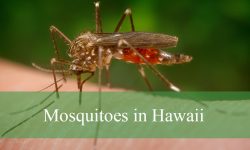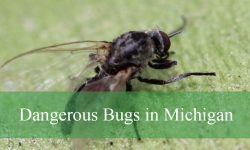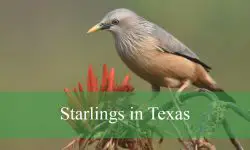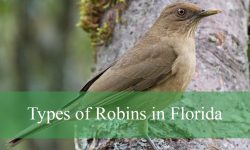The migration of monarch butterflies in Mexico is among the most breathtaking natural spectacles on Earth. Each year, millions of monarchs travel thousands of miles from the northern regions of the United States and Canada to overwinter in the high-altitude forests of central Mexico. This extraordinary journey has fascinated scientists, conservationists, and nature lovers for generations.
This migration is not merely about survival—it’s a tale of endurance, instinct, and the mystery of navigation. Monarch butterflies, delicate as they appear, demonstrate remarkable strength and precision during their voyage. The journey covers approximately 2,500 to 3,000 miles, depending on the point of origin, and includes challenges such as changing climates, predators, and habitat loss.
What makes this event even more astonishing is that the butterflies that arrive in Mexico are several generations removed from those that departed the previous year. Despite this generational gap, they return to the same regions—sometimes even the same trees—guided by cues still not fully understood by science.
Understanding the Monarch’s Journey
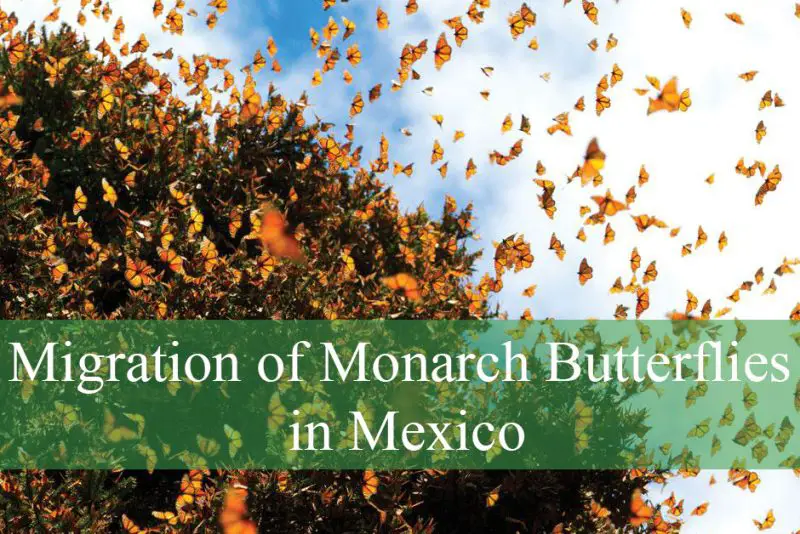
The monarch butterfly (Danaus plexippus) is easily recognizable by its vibrant orange wings with black veins and white spots. Their migration pattern is unique among butterflies. While other species may move in search of food or better climate conditions, the monarch undertakes a complex, multi-generational migration that resembles the patterns of birds or whales more than insects.
Monarchs begin their journey in late summer or early fall. As temperatures drop in North America, they head south toward Mexico, seeking the ideal microclimate of oyamel fir forests located in the Sierra Madre mountains. These forests provide the perfect conditions for hibernation—cool but not freezing, moist but not wet.
Upon arriving in Mexico, monarchs cluster together in the millions, hanging from tree branches and forming vibrant living curtains of orange and black. They remain mostly inactive during the winter months, conserving energy and waiting for warmer weather to signal their return northward.
Why Mexico? The Perfect Winter Refuge
The specific region of central Mexico that monarchs migrate to lies primarily in the states of Michoacán and the State of Mexico. The Monarch Butterfly Biosphere Reserve, a UNESCO World Heritage Site, was established to protect this vital overwintering habitat. Located between 2,400 and 3,600 meters above sea level, this region offers the ideal climate for monarch survival during the coldest part of the year.
The oyamel fir trees of this mountainous region are particularly suited to the butterflies’ needs. Their dense canopies provide shelter from harsh winds and precipitation, while the temperature remains cool enough to slow the butterflies’ metabolism, allowing them to survive on stored energy from their fall migration.
These conditions are fragile. Deforestation, illegal logging, and climate change pose serious threats to the ecosystem. Even slight changes in temperature or humidity can disrupt the delicate balance that monarchs rely on to survive the winter.
The Role of Generational Migration
One of the most fascinating aspects of the monarch migration is that it takes several generations to complete the full cycle. The butterflies that fly south in the fall are known as the “Methuselah generation”—named for their unusually long lifespan, which can stretch up to eight months. These are the monarchs that reach Mexico, hibernate through the winter, and then begin the journey north in spring.
In contrast, the generations born during the northward migration live only a few weeks. These spring and summer monarchs breed and lay eggs, continuing the journey over the course of several reproductive cycles. It may take three to four generations before the monarchs reach the northernmost parts of their range again.
Despite never having made the journey themselves, each new generation somehow knows the route. Researchers believe this instinctual navigation may be influenced by a combination of environmental cues, genetic programming, and possibly even a sun compass located in the butterflies’ antennae.
Navigational Mysteries of the Monarchs
How monarch butterflies navigate such vast distances remains one of the most intriguing mysteries in entomology. While some progress has been made in understanding their orientation mechanisms, no single theory can fully explain the monarch’s navigational abilities.
Researchers have discovered that monarchs use the position of the sun in the sky to orient themselves, relying on an internal circadian clock to adjust their direction throughout the day. This sun compass helps them maintain a consistent flight path southward during the fall migration.
In addition to solar navigation, there is evidence that monarchs may use Earth’s magnetic field as a backup guide when the sky is overcast or the sun is not visible. The existence of magnetoreceptors in monarchs’ antennae supports this theory, though it is still under investigation.
Other potential influences include visual memory of geographic landmarks and even olfactory cues that help monarchs identify their ancestral overwintering grounds. The full picture of how these delicate insects complete such a precise journey remains incomplete, making it one of nature’s most enduring puzzles.
Cultural Significance in Mexican Traditions
In Mexico, the arrival of monarch butterflies carries deep cultural meaning. Their appearance each year coincides with Día de los Muertos (Day of the Dead), celebrated from October 31st to November 2nd. In many indigenous traditions, monarchs are believed to be the returning spirits of deceased loved ones, visiting the living world during this sacred time.
This belief is particularly strong in the Purépecha and Mazahua communities of Michoacán, who have lived in harmony with the butterflies for centuries. The butterflies’ annual arrival is seen not just as a biological event but also as a spiritual reunion, bridging the worlds of the living and the dead.
Local festivals, processions, and altars often incorporate butterfly imagery, emphasizing their symbolic importance. This cultural reverence adds another layer of protection for the monarchs, as many local people are deeply invested in preserving their environment and traditions.
Conservation Challenges and Community Efforts
The migration of monarch butterflies in Mexico is under increasing threat from environmental degradation, habitat loss, and climate change. Logging, both legal and illegal, has reduced the size of the oyamel fir forests. Agricultural expansion has replaced native vegetation with croplands, diminishing the availability of milkweed—the only plant monarch larvae can feed on.
Climate change introduces new variables, such as unseasonal temperatures, storms, and droughts, which disrupt the delicate timing and success of the monarch migration. Shifts in weather patterns can lead to premature departures, weakened butterflies, and reduced survival rates during overwintering.
In response, conservation organizations, governments, and local communities have launched initiatives aimed at protecting both the monarch and its habitat. These include reforestation efforts, education programs, and sustainable tourism practices that help support local economies without harming the butterflies’ environment.
The Importance of Milkweed in the North
While Mexico provides critical overwintering sites, monarchs depend heavily on the availability of milkweed plants throughout their migratory route. Female monarchs lay their eggs exclusively on milkweed, as it is the only food source their caterpillars can consume.
In recent decades, widespread use of herbicides in North America has led to the destruction of milkweed in agricultural and roadside areas. The resulting decline in milkweed availability has had a significant impact on monarch populations, particularly during their spring and summer breeding periods.
Efforts to restore milkweed habitats have become a major focus of conservation work. Home gardeners, schools, and environmental groups are encouraged to plant native milkweed species to provide safe breeding grounds. These grassroots actions play an essential role in ensuring that each generation of monarchs can complete its leg of the journey.
Tourism and Responsible Travel to Monarch Reserves
Every year, thousands of eco-tourists travel to Mexico to witness the awe-inspiring sight of monarch butterflies clustered in the mountain forests. The most popular destinations include El Rosario and Sierra Chincua sanctuaries, which are part of the Monarch Butterfly Biosphere Reserve and open to the public during the overwintering months.
Visiting these sanctuaries provides not only an unforgettable experience but also economic incentives for local communities to protect the monarchs’ habitat. Entrance fees, guided tours, and locally made crafts contribute to sustainable income sources that depend on the butterflies’ continued presence.
Tourists are urged to follow strict guidelines when visiting the sanctuaries. These include maintaining silence, avoiding touching the butterflies, and staying on designated trails to minimize disruption. Responsible ecotourism helps ensure that future generations can continue to marvel at this natural wonder.
Scientific Monitoring and International Cooperation
The monarch migration spans multiple countries, making international cooperation essential to its protection. Scientists and conservationists across the United States, Canada, and Mexico have collaborated to monitor monarch populations, map migratory routes, and identify key threats.
Tagging programs allow researchers to track the movements of individual butterflies and gain insights into survival rates and travel distances. Citizen science initiatives, such as Monarch Watch, enlist the help of volunteers in collecting data and raising awareness.
In 2014, the leaders of the three North American countries pledged to take action to protect the monarch butterfly. This tri-national effort underscores the shared responsibility of conserving a species whose journey knows no borders.
Hope for the Future of the Monarch Migration
Despite the challenges they face, monarch butterflies continue to inspire hope. Their resilience, beauty, and mysterious journey symbolize nature’s capacity for renewal. Through coordinated conservation efforts, public awareness, and cultural respect, there is still a chance to safeguard this miraculous migration.
Education remains key. Schools across North America now include monarch migration in their science and environmental studies curricula. Children learn about life cycles, ecosystems, and the interconnectedness of species, often raising monarchs in classrooms and releasing them into the wild.
The monarch butterfly migration is not just a story of flight; it is a symbol of persistence, cooperation, and shared heritage. By protecting their path, we preserve more than a species—we protect the wonders of nature itself.
FAQs about the Migration of Monarch Butterflies in Mexico
What month do monarch butterflies arrive in Mexico?
Monarch butterflies typically arrive in central Mexico from late October to early November, often coinciding with Día de los Muertos.
Where do monarch butterflies migrate to in Mexico?
They migrate to high-altitude oyamel fir forests in the states of Michoacán and the State of Mexico, primarily within the Monarch Butterfly Biosphere Reserve.
Why do monarch butterflies migrate to Mexico?
Mexico’s cool, moist mountain forests provide ideal conditions for overwintering. The trees offer shelter and stable temperatures that help the butterflies conserve energy.
How far do monarchs travel to reach Mexico?
Monarchs travel between 2,500 and 3,000 miles from their breeding grounds in the U.S. and Canada to their winter sites in central Mexico.
Are monarch butterfly populations declining?
Yes, monarch numbers have declined significantly in recent decades due to habitat loss, pesticide use, and climate change.

